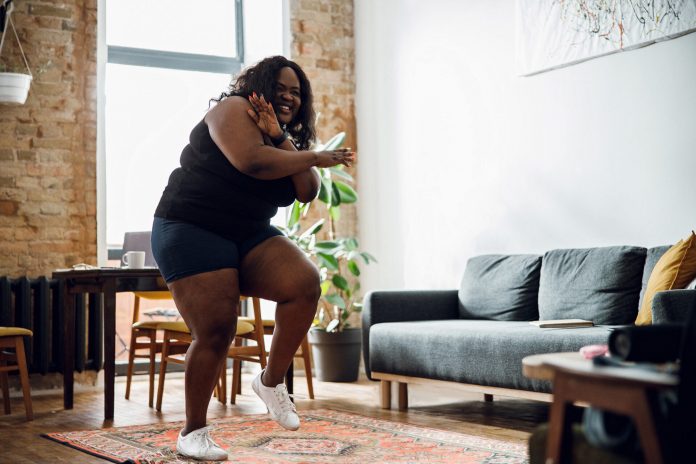What makes a morning trip to the gym or an after-work bike ride an essential (and even joyful) habit for some people? And why do others shun the notion of regular physical activity?
The difference might come down to perception. You’re less apt to exercise when the endeavor feels isolating, painful or unlikely to deliver visible results such as weight loss. By comparison, those who enjoy their exercise of choice are more inclined to stay active—even after setbacks. That’s what University of Michigan researchers learned after conducting focus groups with women about what motivates (and undermines) exercise. The results were published in May in BMC Public Health.
The key takeaway: Fitness is fluid. “People don’t think they have choices,” said Michelle Segar, director of the University of Michigan Sport, Health, and Activity Research and Policy Center and a co-investigator in the study. “But when you’re flexible with what you do, you’re able to integrate physical activity into the normal ebbs and flows of life.” The work, funded by the National Cancer Institute, surveyed women ages 22 to 49 in the Washington, D.C., area. Although the women were categorized as “high active” and “low active” based on their fitness habits, both groups shared similar core values that made them feel happy and successful, such as connecting with and helping others, feeling relaxed and free of pressure and achieving goals.
The low-activity women in the study struggled to embrace exercise because workouts felt too intense or time-consuming and failed to deliver weight loss—a disconnect that hurt their emotional well-being. That, Segar said, ought to shift the conversation about what it means to exercise. In other words, embrace that any movement you can do is worth doing, no matter for how long. Likewise, focus less on marathons or bodybuilding and more on simple, anytime activities such as walking, yoga and in-line skating—and foster a more forgiving attitude.
After all, exercise has all kinds of health benefits that extend well beyond weight. “We need to get this knowledge through people’s belief systems,” said Segar, who shared four main conclusions relevant to anyone.
4 REASONS TO RETHINK YOUR FITNESS GOALS:
Exercise should make you feel good. Many people, regardless of ability, have a lifelong perception that a workout requires pain, sweat and endurance to be effective. Not true, said Segar: “Physical activity can be an escape.” And, as evidenced by the high-active women in the U-M survey, viewing fitness as a complement—and not a chore—makes the prospect easier.
Those who have negative thoughts about the gym needn’t worry. “Countless studies have shown that physical activity that takes place outside is really, really effective,” said Mark Peterson, Ph.D., a U-M assistant professor of physical medicine and rehabilitation who wasn’t involved with Segar’s review. So put on some sunblock and try a nature hike or a Frisbee game instead.
Exercise is a great way to socialize. It’s tougher to dodge or delay a workout when you are doing it with a friend or co-worker. That’s why so many basement treadmills double as a laundry drying rack, joked Peterson, who beyond his solo gym trips schedules group exercise several times a week. “I like it so much more when my friends show up,” he said.
The value is real: A 2017 study that followed the exercise patterns of more than 1 million people found that friends hold sway. Still, the low-active women in the U-M analysis voiced concerns that exercise detracts from interpersonal obligations. Countered Segar: “Movement is a great way to be with and give to your friends and loved ones. Instead of having a coffee catch-up, how about a walking catch-up? Or you can play outside as a family.”
Exercise affects all parts of your life. Want to improve your sleep, sharpen workplace performance and reduce stress? Fitness plays a role in all of that—and it has long-term benefits such as slowing cognitive decline. Perks also can be instant. “Research shows people can walk for just a few minutes and boost their energy,” Segar said. “Who doesn’t want that?”
Conversely, your body goes through noticeable changes when you stop exercising, even if the break lasts only a short time. “Cardiovascular fitness and strength deteriorate within weeks; it does happen pretty quickly,” said Peterson. Among the other potential downsides to inactivity are increased blood pressure and blood sugar. Memory benefits can decrease, too.
Exercise can take many forms—and lengths. Once considered a gold standard, a half-hour workout is no longer the bare minimum. Physical activity can be done in small increments. “Many still don’t understand that you can accumulate movement in pieces, but it’s one of the keys for busy people to sustain a physically active life,” said Segar.
That said, Peterson noted that diversity of activity is key, not only for sustaining motivation but also for good health. Beyond aerobic activity such as walking and swimming, people should incorporate weekly resistance training. Weights aren’t always necessary, especially when just starting out: Consider push-ups, pull-ups, squats and climbing stairs. Even playing with your kids on the jungle gym works your muscles.
From Michigan Health






